This article was co-authored by Andrew Peters. Andrew Peters is an Architecture and Construction Specialist and a Principal at Peters Design-Build, a full service architecture and construction firm in the San Francisco Bay Area. With over 20 years of experience, Andrew specializes in sustainable and holistic design and building practices. Andrew holds a Bachelor of Architecture and a Project Management Professional (PMP) certification and is a Leadership in Energy and Environmental Design (LEED)-Accredited Professional. He served as Project Manager for the international-award-winning “Refract House,” Team California’s entry in the 2009 U.S. Department of Energy Solar Decathlon, a project featured in over 600 online and print articles.
There are 11 references cited in this article, which can be found at the bottom of the page.
wikiHow marks an article as reader-approved once it receives enough positive feedback. This article has 18 testimonials from our readers, earning it our reader-approved status.
This article has been viewed 2,173,981 times.
Whether you need a fortress of solitude or want to start your own recording studio or music space, you will want to soundproof the space you intend to use. Read below for some helpful advice on how you can soundproof a room on the cheap or do it like the pros.
Things You Should Know
- Push bookcases against the wall or install acoustic wall panels. This allows your walls to absorb more sound, making your room quieter.
- Avoid annoying buzzing noises by mounting items that could shake, like a stereo. When you do this, make sure to use insulation pads, too.
- Fill your walls with damping compound, then cover them with soundproofing panels. This takes more work, but it's very effective.
Steps
Easy Methods
-
1Install sound curtains or thick blankets. You can absorb a little sound by mounting thick blankets to the wall.[1] If you're willing to spend a little money, purchase heavy sound curtains instead.
- If you have thick, insulated walls, this will have little additional effect.
-
2Use bookcases. You can make walls thicker and more soundproofed by simply making use of bookshelves. Cover a wall in bookshelves and books for a fairly effective sound barrier. Plus, you get a nice library out of the deal.Advertisement
-
3Mount shaky items. Have you ever had a neighbor turn their music up really loud and noticed that buzzing, rattling vibration sound more than anything else? Yeah, that’s why you’re going to want to mount items like speakers. Use vibration insulation pads when mounting to keep items like speakers from annoying everyone around you. [2]
-
4Install a door sweep. Nail this rubber loop to the base of a door to block the gap. If the gap is too large to cover with a sweep, nail a strip of lumber to the base of the door first.[3]
-
5Use acoustic wedges panels. Purchase 12"x12" panels with a 2" depth curve relief. These do well to absorb low to high frequencies. Some panels come already with an adhesive peel. Use 3M spray adhesive to glue the panels to the walls and ceiling if it doesn't come with adhesive peel. You can cover all or just parts of the surface, depending on the amount of dampening you desire. This cuts down on the 'noise' inside the room and keeps your ears happy, especially if it is music rehearsal space.
- Use a panel that is mostly fiberglass with a thin Mylar perforated facing. These types of panels have the highest ratings in sound absorption values among almost all but the most expensive specialty tiles. They will give you far more bang for buck than any other on the market.
Soundproof Construction
-
1Use thick material. The thicker and denser the material, the more sound it will absorb. Consider using ⅝" (1.6 cm) drywall instead of the thinner sizes You could also use concrete or brick, if that's an option.[4]
- If you are improving on an existing wall, build a basic wall frame and attach it to the surface, anchoring it to the existing studs. Cover this with a new layer of drywall or sheetrock—or even multiple layers of drywall, for the best results.[5]
-
2Separate the two layers of wall. Whenever sound travels into a new substances, some of its energy is absorbed, and some is reflected. Increase this effect by building the wall from two sheets of drywall or sheetrock, with as much space between them as possible. This is called decoupling.
-
3Plan your stud placement. Most walls contain a single row of studs touching both layers of wall. Sound travels easily through these studs, which can cancel out a great deal of work. When building a new wall, choose one of the following stud placements instead:[7]
- A double row of studs, one along each interior side. This is the most soundproof method, but requires enough space to leave a gap between the two rows.
- A staggered row of studs, alternating placement along one interior side, then the other.
-
4Consider sound clips or channels. These are placed between the studs and the drywall, providing an additional barrier for sound. There are two main options:
- Sound clips are the most effective method, absorbing sound with heavy rubber components. Screw them into the studs, insert a hat channel, then screw the drywall into the channel.[8]
- Resilient channel is a springy metal channel designed for soundproofing. Screw this to the studs and drywall using offset screws.[9] This may improve high-frequency blocking at the expense of low frequencies.[10]
- Note that hat channels are not effective at sound proofing.
-
5Fill walls with a damping compound. This magical substance converts sound energy to heat. This can be used between layers of wall, floor, or ceiling. Unlike most other methods, this should absorb low-frequency noise. This makes it ideal if you expect loud bass from music and home theater systems.[11]
- This is also sold as noise proofing glue or viscoelastic adhesive.
- Some of these compounds may take days or weeks to "cure" to their full potential.[12]
-
6
-
7Fill cracks with acoustical caulk. Even small cracks and gaps between materials can undermine sound proofing. Special acoustical caulk (also sold as acoustical sealant) fills these gaps with an elastic, sound-resistant material. Fill all cracks, as well as seams around the walls and windows. Keep the following in mind:[15]
- Water-based caulks are easier to clean up. If using a solvent-based caulk, check the label to make sure it won't harm your materials.
- If the caulk doesn't match the wall color, choose one that specifically says it can be painted over.
- Consider using normal caulk for the smallest cracks, since acoustical caulk is more difficult to handle.
-
8Soundproof floors and ceilings. Floors and ceilings can be soundproofed using many of the same systems suitable for walls. Most commonly, homeowners add an additional layer (or two) of drywall, with dampening glue in between.[16] As a simple additional step, cover the floor with soundproofing mats, then install carpet.
- You do not need to soundproof the floor if there is no room below you.
- Heavy concrete ceilings won't benefit much from the additional mass of drywall and damping compound. Instead, add a drywall layer with an air gap in between, or fill the gap with fiberglass insulation.
-
9Install soundproofing panels. If the soundproofing in your completed room is not substantial enough, you can also use acoustic panels. Cheap options are available, but the more expensive panels may be more effective.
- Be sure to attach these to wall studs or other strong structures.
-
10Finished.
Expert Q&A
Did you know you can get expert answers for this article?
Unlock expert answers by supporting wikiHow
-
QuestionWhat is the best material to be used for building a raised walkway?
 Mark SpelmanMark Spelman is a General Contractor based in Austin, Texas. With over 30 years of construction experience, Mark specializes in constructing interiors, project management, and project estimation. He has been a construction professional since 1987.
Mark SpelmanMark Spelman is a General Contractor based in Austin, Texas. With over 30 years of construction experience, Mark specializes in constructing interiors, project management, and project estimation. He has been a construction professional since 1987.
Construction Professional
-
QuestionHow do I soundproof my ceiling so that I don't hear my upstairs neighbors?
 Mark SpelmanMark Spelman is a General Contractor based in Austin, Texas. With over 30 years of construction experience, Mark specializes in constructing interiors, project management, and project estimation. He has been a construction professional since 1987.
Mark SpelmanMark Spelman is a General Contractor based in Austin, Texas. With over 30 years of construction experience, Mark specializes in constructing interiors, project management, and project estimation. He has been a construction professional since 1987.
Construction Professional
-
QuestionWhat should I do to make it to where no one can really hear my music and voice?
 Mark SpelmanMark Spelman is a General Contractor based in Austin, Texas. With over 30 years of construction experience, Mark specializes in constructing interiors, project management, and project estimation. He has been a construction professional since 1987.
Mark SpelmanMark Spelman is a General Contractor based in Austin, Texas. With over 30 years of construction experience, Mark specializes in constructing interiors, project management, and project estimation. He has been a construction professional since 1987.
Construction Professional
Warnings
- Construction or heavy modification of walls, floors, and ceilings should be done under experienced supervision only.⧼thumbs_response⧽
- The standard STC soundproof rating system is not always useful. It does not take into account any frequencies below 125 Hertz, which includes sound from music, traffic, airplanes, and construction.[17]⧼thumbs_response⧽
References
- ↑ http://www.wisegeek.com/how-can-i-make-a-room-soundproof.htm
- ↑ http://howto.wired.com/wiki/Soundproof_a_Room
- ↑ http://www.soundproofing.org/infopages/soundproofing_doors.htm
- ↑ Andrew Peters. Architecture & Construction Specialist. Expert Interview. 24 November 2020.
- ↑ Andrew Peters. Architecture & Construction Specialist. Expert Interview. 24 November 2020.
- ↑ http://www.tmsoundproofing.com/decoupling-explained.html
- ↑ http://www.tmsoundproofing.com/decoupling-explained.html
- ↑ http://www.tmsoundproofing.com/decoupling-explained.html
- ↑ http://www.soundproofing.org/infopages/channel.htm
- ↑ http://www.avsforum.com/forum/19-dedicated-theater-design-construction/909224-whats-difference-between-resilient-channel-furring-strips.html
- ↑ http://www.noisehelp.com/soundproofing-material.html
- ↑ http://howto.wired.com/wiki/Soundproof_a_Room
- ↑ http://www.noisehelp.com/soundproofing-material.html
- ↑ Andrew Peters. Architecture & Construction Specialist. Expert Interview. 24 November 2020.
- ↑ http://www.noisehelp.com/acoustical-caulk.html
- ↑ http://www.soundproofingcompany.com/soundproofing-solutions/soundproof-a-ceiling/
- ↑ http://www.greengluecompany.com/benefit/how-green-glue-works/understanding-sound-transmission-class-stc
About This Article
To build a sound proof room, try hanging thick blankets or sound curtains on the walls, which will contain some of the noise you're making in the room. You can also install a door sweep underneath the door to block the gap and keep more sound in. If that's not sound proof enough, get some acoustic wedge panels and cover all of the walls with them. The panels will absorb sounds so they aren't heard outside of the room. If you want to learn how to build soundproofing into the wall during construction, keep reading the article!


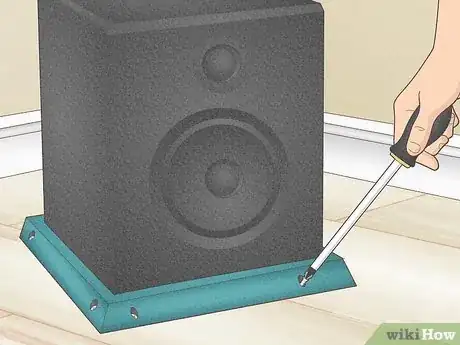

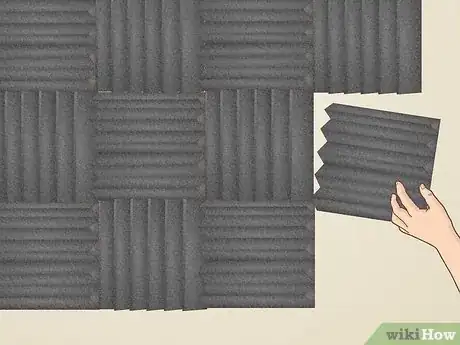
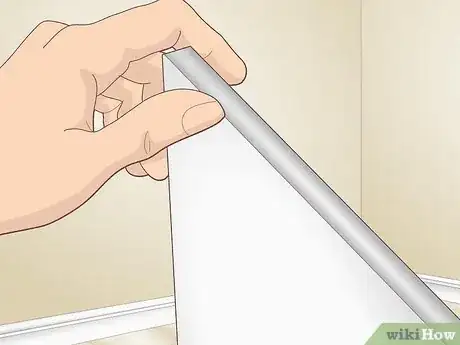



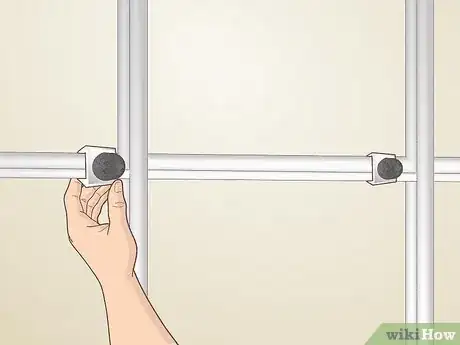



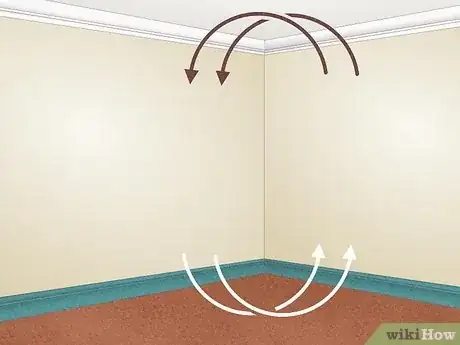

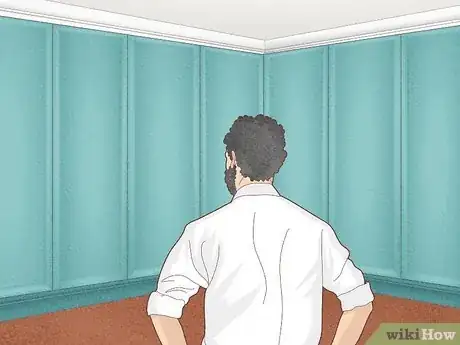



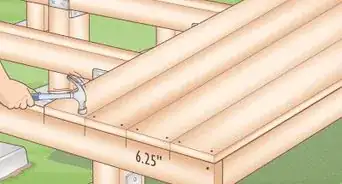






-Step-19-Version-2.webp)


















































